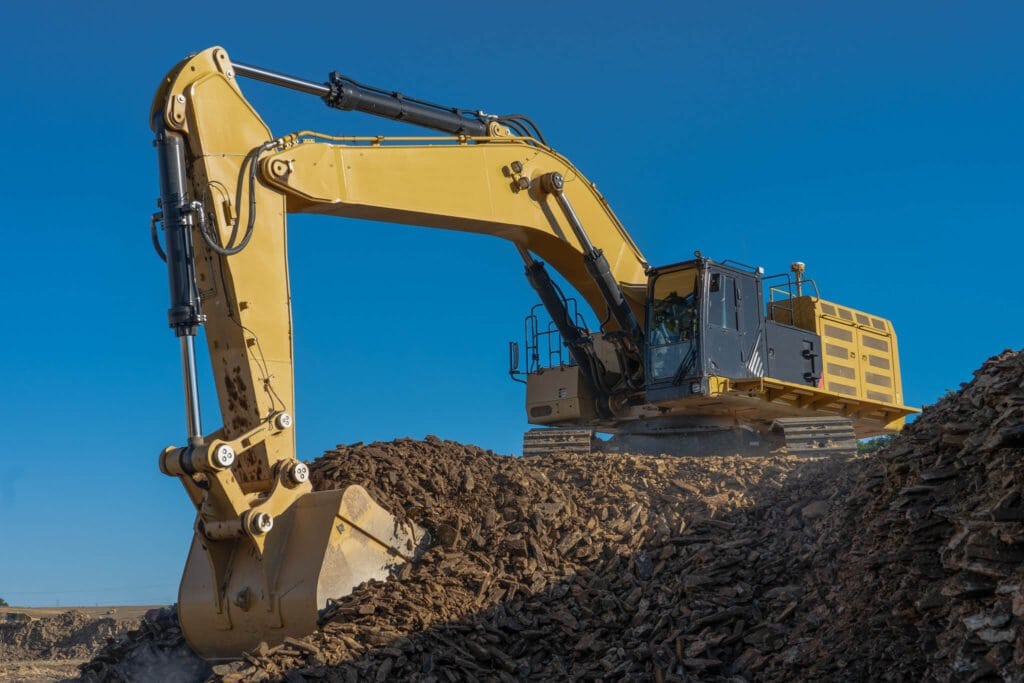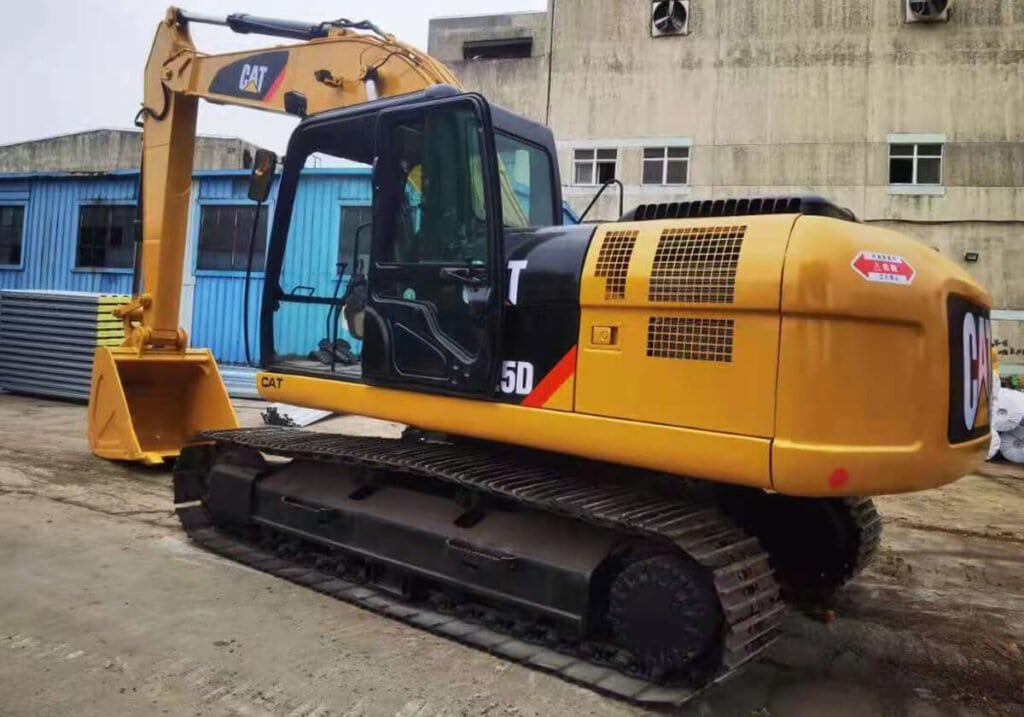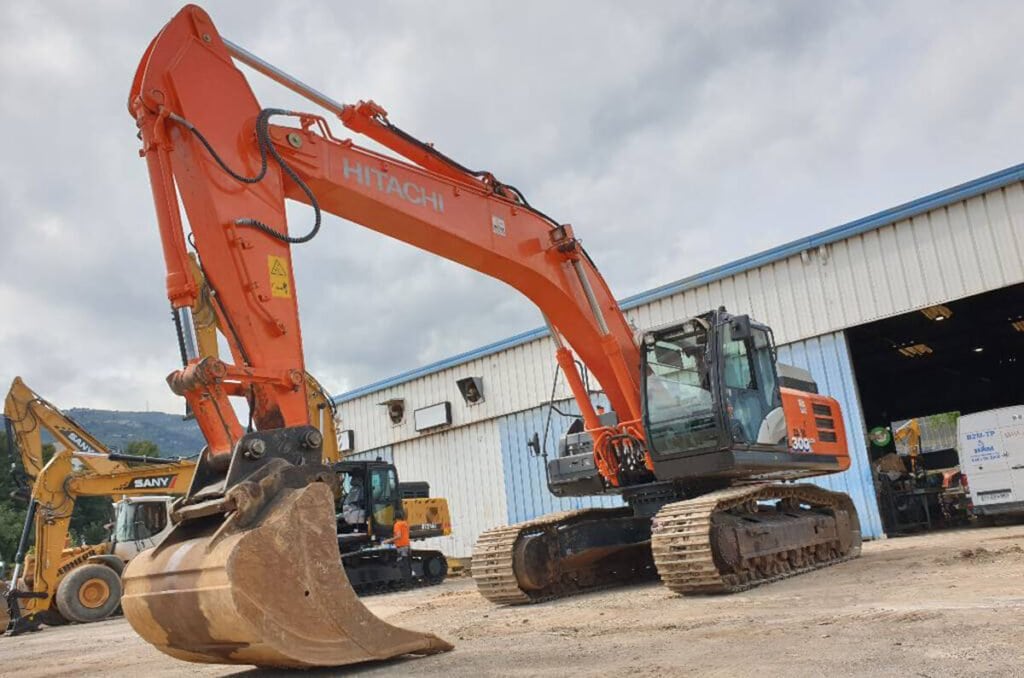مقدمة
Excavators in construction: In the construction and earthmoving industries, one of the biggest challenges is ensuring that heavy-duty tasks like digging, lifting, and demolition are performed efficiently and safely. Without the right equipment, these tasks can become slow, expensive, and dangerous.
Imagine the delays and added costs when excavation work takes longer than expected. Construction projects can come to a halt, leading to missed deadlines and budget overruns. In such circumstances, relying on equipment that isn’t up to the task or lacks versatility can significantly disrupt the workflow.
Excavators, with their unrivaled strength and versatility, play a crucial role in overcoming these obstacles. Whether it’s digging trenches, lifting heavy loads, or performing demolition, excavators are designed to handle a variety of tasks, making them an indispensable asset on any construction site. In this article, we’ll explore the essential roles excavators play in construction and earthmoving, showing why they are at the heart of efficient project execution.

1. Excavators in Digging and Earth Moving
1.1 Digging Foundations and Trenches
One of the primary functions of an excavator is to dig. In the construction process, excavators are often called upon to dig foundations for buildings, roads, and other structures. The strength and efficiency of excavators allow them to perform large-scale excavation quickly and accurately.
- Foundation Excavation: Excavators are used to dig deep trenches and foundations, which form the base for buildings, bridges, and large infrastructure projects. Depending on the soil type and the required depth, different types of excavators, like large hydraulic machines, may be employed.
- Trenching for Utilities: Excavators are also essential for digging trenches for utilities such as water pipes, sewage systems, and electrical cables. Excavators equipped with trenching attachments are particularly suited for this type of task, as they ensure precision and depth control.
1.2 Earth Moving for Site Preparation
Before any construction begins, the site needs to be properly prepared. Excavators are ideal for moving large volumes of earth and leveling the ground.
- Site Levelling: Excavators with a bucket attachment are used to remove dirt and rocks from uneven terrain, helping to level the land for construction. This is especially important in areas where the ground has been left uneven by previous land use or natural topography.
- Soil Moving: Excavators also play a crucial role in transferring large quantities of soil or debris from one location to another. Whether you need to move earth to fill in low-lying areas or clear out old debris, excavators make the process far more efficient.

2. Excavators in Lifting and Loading
2.1 Material Handling and Loading
Excavators are equipped with a variety of attachments to help move, load, and unload materials on a construction site. These machines are typically used to load materials such as sand, gravel, or debris into dump trucks for transportation.
- Lifting and Moving Heavy Materials: With the appropriate attachments, such as lifting hooks, excavators can move heavy building materials like pipes, bricks, and large blocks of concrete. This eliminates the need for manual labor and speeds up the construction process.
- Loading Trucks: Excavators equipped with a large bucket or hydraulic clamshell can easily load soil, gravel, and rocks into trucks for removal. This reduces the labor cost associated with manual loading and ensures a more efficient operation.
2.2 Handling Demolition Debris
In addition to earthmoving and lifting, excavators are vital in demolition projects where they assist in breaking down structures and clearing the site of debris.
- Demolition Work: Excavators are often fitted with special attachments such as hydraulic breakers or crushers to break down concrete and other tough materials during demolition. After the structure has been demolished, the excavator is used to scoop up debris and transport it to a waste disposal area or recycling facility.
- Clearing Land: Excavators are also used to clear large pieces of debris, including tree stumps, large rocks, and other obstacles that might hinder the progress of construction. This is particularly useful in land reclamation projects or when working in areas that have been severely affected by natural disasters.

3. Excavators in Specialized Roles
3.1 Hydraulic Excavators for Mining and Quarrying
Excavators play a critical role in mining and quarrying, where large-scale digging is required to extract resources from the earth. Hydraulic excavators are particularly well-suited for these applications due to their powerful lifting and digging capabilities.
- Mining Operations: Excavators are used to extract minerals, coal, and other resources from open-pit mines. The ability to dig to significant depths and transport materials directly into trucks or other machinery makes excavators an ideal choice for mining applications.
- Quarrying: In quarrying, excavators help to extract rock, sand, gravel, and other aggregate materials. They assist in the extraction process by digging, moving, and sorting large quantities of material.
3.2 Excavators for Landscaping and Agricultural Work
Beyond their use in traditional construction, excavators can also be used in landscaping and agricultural work. Special attachments enable excavators to assist in digging ponds, creating irrigation channels, or even performing land contouring.
- Landscaping Projects: Excavators are often used in landscaping to move dirt, dig ponds, install water features, or shape the land for aesthetic or functional purposes. Their precision and maneuverability allow them to work in smaller spaces than larger bulldozers or graders.
- Agricultural Use: Excavators can also be used in farming and agriculture to move dirt, clear land, or dig irrigation trenches. They help to reduce the manual labor typically involved in these tasks, making farming operations more efficient.

4. Excavators in Road Construction and Infrastructure Projects
4.1 Excavators in Road Construction
Excavators play an essential role in road construction, particularly in grading and earthmoving. For projects that involve laying down new roads or maintaining existing ones, excavators help to shape the roadbed and remove excess material.
- Grading and Leveling: Excavators are used to dig, level, and smooth the ground where roads will be laid. They ensure that the ground is stable and even, which is crucial for the longevity and durability of the road.
- Clearing Right of Way: Before road construction can begin, an excavator is often needed to clear trees, rocks, and other obstacles from the right of way. This task ensures that the path is free of hindrances and is ready for the construction team to proceed with the project.
4.2 مشاريع البنية التحتية
In addition to roads, excavators are often involved in infrastructure projects like bridges, tunnels, and railways.
- Bridge and Tunnel Construction: Excavators are used in the initial excavation phase of bridge and tunnel projects. They help clear the ground, remove earth, and create the necessary depth for foundations and supports.
- Utility Installation: Excavators assist in digging trenches for pipelines, electrical lines, and other utilities that are critical to supporting infrastructure projects. Excavators equipped with trenching buckets are ideal for ensuring precise and consistent digging for utility installation.

5. Excavator Types and Their Roles in Construction and Earthmoving
Excavators come in various shapes and sizes, each designed to tackle different tasks more efficiently. The type of excavator you choose depends on the specific requirements of your construction or earthmoving project, such as the terrain, the depth of excavation, and the type of material being moved. Here, we’ll cover the most common excavator types and the roles they play in construction and earthmoving operations.
5.1 Crawling Excavators (Crawler Excavators)
Crawler excavators are equipped with tracks rather than wheels, making them ideal for rough, uneven, or soft terrain. They are highly durable and can operate on challenging surfaces where wheeled excavators might struggle.
- دلائل الميزات:
- Tracks for stability on soft or uneven ground.
- Typically have a higher lifting capacity and better stability for heavy-duty tasks.
- التطبيقات:
- Large-scale Earthmoving: They are perfect for working in quarries, mining sites, or any large-scale projects where maneuverability on soft soil or sloped terrain is crucial.
- هدم: Due to their weight and stability, crawler excavators are often used in demolition jobs to tear down buildings or break through solid surfaces like concrete.
5.2 Wheeled Excavators
Wheeled excavators, in contrast to their tracked counterparts, are equipped with wheels that make them faster and more mobile on flat, paved surfaces.
- دلائل الميزات:
- Wheels for better speed and mobility on paved or solid surfaces.
- Easier to transport over long distances.
- التطبيقات:
- Urban Construction: Their ability to move quickly and efficiently on roads makes them ideal for urban projects like road repairs or utilities installation.
- Landscaping and Site Preparation: Wheeled excavators are excellent for tasks that require frequent moving between job sites or across large, flat construction areas.
5.3 Mini Excavators
Mini excavators, often referred to as compact excavators, are smaller, more maneuverable machines that can operate in tight spaces. These are perfect for projects that require precision and minimal disruption to the surrounding environment.
- دلائل الميزات:
- Small size and compact design.
- Suitable for working in confined spaces, such as residential areas or landscaping projects.
- التطبيقات:
- Residential Construction: Mini excavators are commonly used for tasks like digging small foundations, trenching for pipes or cables, and grading yards.
- المناظر الطبيعية: The compact size allows them to easily navigate narrow spaces like backyards or gardens.
5.4 Long Reach Excavators
Long reach excavators are specially designed with extended booms and arms, allowing operators to reach further distances, especially in deep or hard-to-reach areas.
- دلائل الميزات:
- Extended arms and booms to increase the working range.
- Ideal for deep excavation or work over obstacles.
- التطبيقات:
- Dredging and Riverbed Excavation: Used in applications where traditional excavators cannot reach.
- Bridge Construction: Long reach excavators are often used to reach across water or to clear large debris from waterways and canals.
5.5 Hydraulic Excavators
Hydraulic excavators are the most common type, using hydraulic systems for lifting, digging, and moving materials. These machines are highly versatile, offering the flexibility to be equipped with various attachments.
- دلائل الميزات:
- Hydraulic power for lifting and digging heavy loads.
- Can be fitted with a variety of attachments like buckets, hammers, and breakers.
- التطبيقات:
- Heavy-duty Earthmoving: Hydraulic excavators are used for large-scale earthmoving projects, including digging foundations, trenching, and moving large volumes of material.
- الهدم والتعامل مع المواد: With the appropriate attachment, hydraulic excavators can be used for demolition work, crushing, or breaking down large structures.
5.6 Dragline Excavators
Dragline excavators are large, heavy-duty machines used for digging and lifting in extreme conditions, typically in mining and large construction projects.
- دلائل الميزات:
- Large bucket and rope system for lifting and dragging material.
- Can operate in deeper areas compared to traditional excavators.
- التطبيقات:
- Mining and Dredging: Dragline excavators are typically used in large mining operations to remove overburden or dig deep pits.
- Deep Excavations: These machines are ideal for digging in very deep or large-scale excavation projects like canal or pond dredging.
5.7 Suction Excavators
Suction excavators, often used in sensitive environments, use high-powered suction to remove material from a site without causing significant disruption or damage to the surroundings.
- دلائل الميزات:
- Suction power to remove material without the need for traditional digging.
- Gentle on the environment, leaving minimal footprint.
- التطبيقات:
- Utility Excavation: Suction excavators are often used for digging around underground utilities like gas lines, electrical cables, or pipes, as they minimize the risk of damaging these systems.
- Environmental Projects: They are used in areas where traditional excavation might harm the landscape or cause excessive noise.

6. Conclusion: Why Excavators Are Invaluable in Construction
Excavators are indispensable machines in the construction and earthmoving industries. Their ability to perform a wide range of tasks, from digging and lifting to demolition and material handling, makes them essential for nearly every type of construction project. The versatility of excavators means they are used in everything from heavy industrial work to landscaping and agricultural projects.
Given their critical role in both large-scale infrastructure projects and smaller-scale construction jobs, excavators continue to be a cornerstone of modern construction, ensuring that projects are completed on time, within budget, and with high efficiency. Whether for digging, moving, lifting, or demolition, excavators are invaluable assets that make the earth-moving process faster, safer, and more precise.